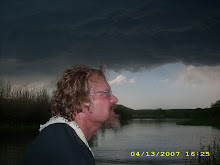
Trans-Pecos legends Ira and Ann Yates, namesakes of that famous conjuncted Texas town, Iraan, bought rough country along the Pecos River in 1915 and barely survived with their nine children until 1926 when black crude bubbled out of their ground. Instantly endowed, they focused on their first love, ranching, and their favorite breed, the Texas Longhorn.
Shipped over the Atlantic in the belly of Spanish Galleons, the longhorn was introduced to the Americas at the port of Vera Cruz, Mexico in about 1541. Gnarly and un-keen to be domesticated, many feraled and worked the low shrub and cactus country with their long legs and nearly hairless bellies north and west up to Texas. Multiplying profusely in a fenceless land, they used their horns to fend off predators like the big cats and grey wolves of that time. They became part of the territory, and their hides originally black from Spain, mutated, turning out brindles, speckles, reds and whites, that blended with the earth and rock. They became regular denizens in northern Mexico and were known as “Corrientes,” a Spanish word meaning “common.”
At the age of twelve, in post-civil war Texas, Ira Yates ran longhorns up the Goodnight-Loving trail to Dodge City where buyers bid cattle, primarily for tallow and hides, because meat and refrigeration had not yet co-mingled. Up to 1890, it’s estimated that 10,000,000 of the feral beasts were rounded up by free-lancing cowboys and driven north to the slaughterhouses.
New breeds gened into existence with higher grease content and larger hides. These hybrids such as Charolais, and Hereford displaced the pure scrawny Texas Longhorn, quickening its route to oblivion.
But Ira’s son, Cap, born in 1886, and buried in the Glass Mountains, was a crucial link in the family effort to preserve the Texas Longhorn. Finding few pure strains in the southwest, Cap traveled to Mexico and rounded up descendants of those first four-legged Spaniards that crossed the pond with the Conquistadores. Cap’s eventual 1500 strong longhorn herd became the seed stock for most of the Texas Longhorn living today.
Cap’s son, Fayette Yates, continued the family tradition, and became the first charter member of the Texas Longhorn Breeders Association. His horn collection can be seen today at the Old Lajitas Trading Post.
